Finding peace in Paro, the gateway to the Land of the Thunder Dragon
The small town of Paro in Bhutan offers a mix of scenic beauty, rich culture, traditional architecture, old traditions, natural healing, and delicious local cuisine.
The only other people in my vicinity head off for a picnic repast as I settle down for a meal. The crisp mountain air and the sound of silence are the perfect accompaniments to a simple, wholesome lunch—trout curry, curried cauliflower, a radish-carrot salad, red rice, and ezay, a condiment the Bhutanese eat with breakfast, lunch, and dinner.
I scoop morsels of the hot fish and rice, and look into the distance where I can see a whitewashed structure through the alpine forest.
“That is Drukgyel Dzong, built by Tenzin Drukdra in 1649 to celebrate Bhutan’s victory over an invasion from Tibet,” the man waiting on me says. I look further into the distance; the outdoor dining space at Amankora Paro offers stunning views that stretch to the 7,300-metre snow-capped peak of Jhomolhari, the bride of Kangchenjunga.
After lunch, I heed the server’s advice and head to the defensive dzong, which was ravaged by a fire in 1951 and has since been reinstated to some of its former glory. I walk up to the main road, passing by traditional Bhutanese settlements, terraced farms, and a gurgling rivulet. The UNESCO World Heritage Site, situated on a ridge in the upper Paro valley, is imposing.
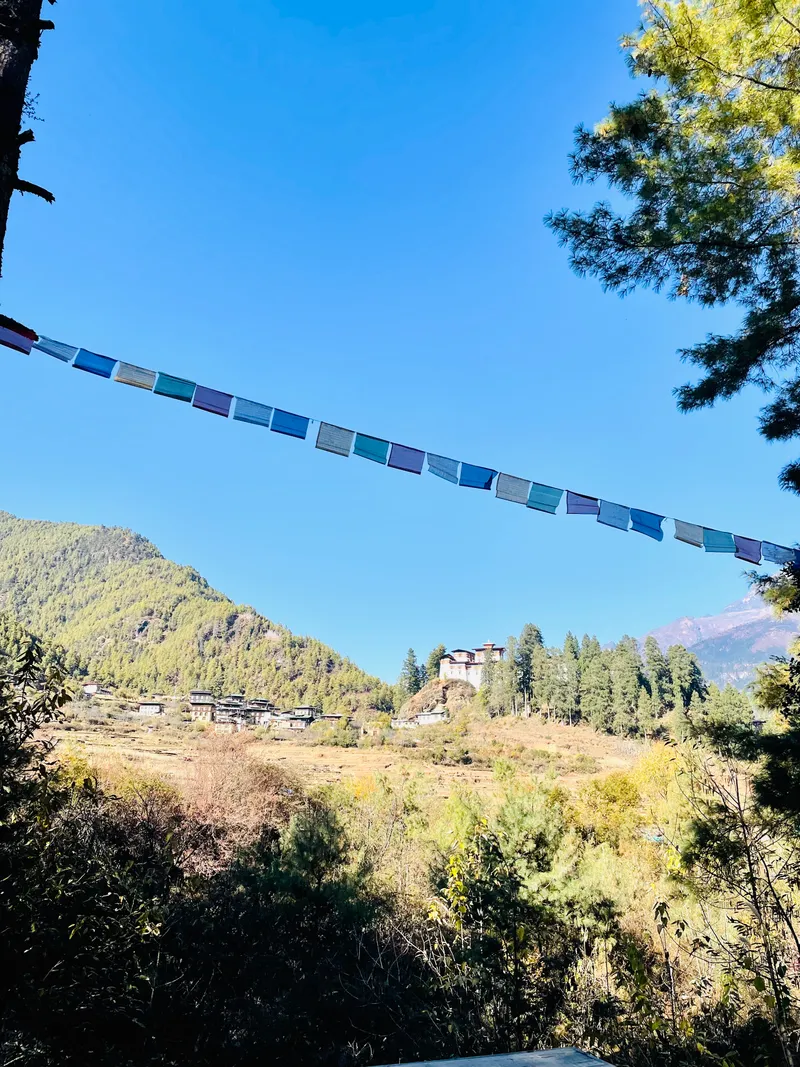
The ancient ruin of Drukgyel Dzong is situated on a ridge in the upper Paro valley.
“The tall walls, stately towers, and secret passages showcase the ingenuity of Bhutanese military engineering of that time,” says my guide, Tshewang Phuntso. He adds that dzongs, which translate into fortress-monasteries, were traditionally built on strategic locations such as hilltops or the confluence of rivers to provide natural defence and gain views of the surrounding areas.
I see what he means when we reach the imposing Paro Dzong, a massive structure built in 1644 by Zhabdrung Ngawang Namgyal, which exemplifies the best of Bhutanese architecture.
The dzong’s formal name, Rinchen Pung Dzong, translates into “Fortress on a Heap of Jewels”, and it stands tall on the foundation of a monastery built by Guru Rinpoche.
“The five-storey utse (central tower) that looms large inside the dochey (courtyard) was built in 1649. Like most dzongs, the Para dzong houses the monastic body and district government offices,” Phuntso tells me.
A stairway leads to the monastic quarter, which houses about 200 monks. The guide points out the kunrey, which functions as the monks’ classroom, and the large dukhang (prayer hall). The towering whitewashed walls; the intricately carved wood, painted in gold, black, red, and ochre; the traditional motifs; and the many thangkas (paintings) and statues reflect the rich history and heritage of the remote Himalayan kingdom.
Perched above Paro Dzong is its watch tower, the ta dzong, which was built in 1649. Renovated in 1968, the round building, said to be in the shape of a conch shell, has 2.5m-thick walls and now houses Bhutan’s National Museum. The hundreds of ancient Bhutanese artefacts and artwork, including thangkas (paintings/artworks), armour, weaponry, traditional costumes, and objects of daily use offer a look at the country’s rich culture and traditions. The small on-premise café offers coffee and snacks with stunning views of the valley.
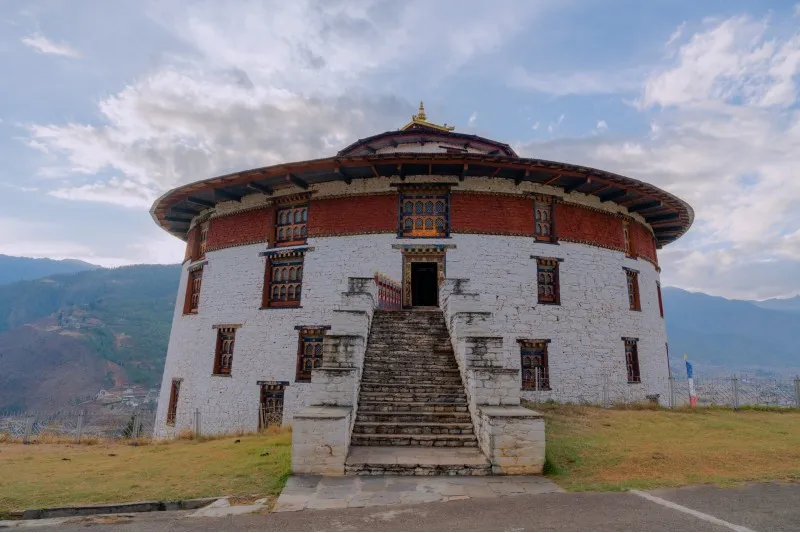
The watchtower of the Paro Dzong was renovated in 1968 to house the National Museum of Bhutan. Courtesy: Bhutan Tourism
After a quick momos-and-ezay halt, we head to the nearby Kyichu Lhakhang Temple, which dates back to the 7th century and has an interesting backstory. Among the oldest temples in Bhutan, the structure is said to have been built overnight on the left foot of a demoness who interrupted the spread of Buddhism.
“People say it’s one of the 108 temples established to subjugate her powers so that Buddhism could flourish. These 108 monasteries were purportedly built in a day by artisans who were representations of the king,” Phuntso says.
That evening, at Amankora, I head to the spa to enjoy another Bhutanese tradition—a hot stone bath. The hotel, built in traditional Bhutanese style with natural rammed-earth walls, gently sloping roofs, and wood-panelled interiors, seems a natural fit in the surroundings. At the wellness centre, the smiling spa supervisor tells me about the healing tradition as she hands me a cup of honey-lemon tea.
“Bhutan was once also known as Menjung, the ‘Land of Medicinal Herbs’, and one of these herbs, artemisia (locally known as khempa), is used in hot stone baths,” says Tshering Peldon, showing me the wooden tub filled with water, which is heated with fire-roasted river stones and liberally strewn with the herb.
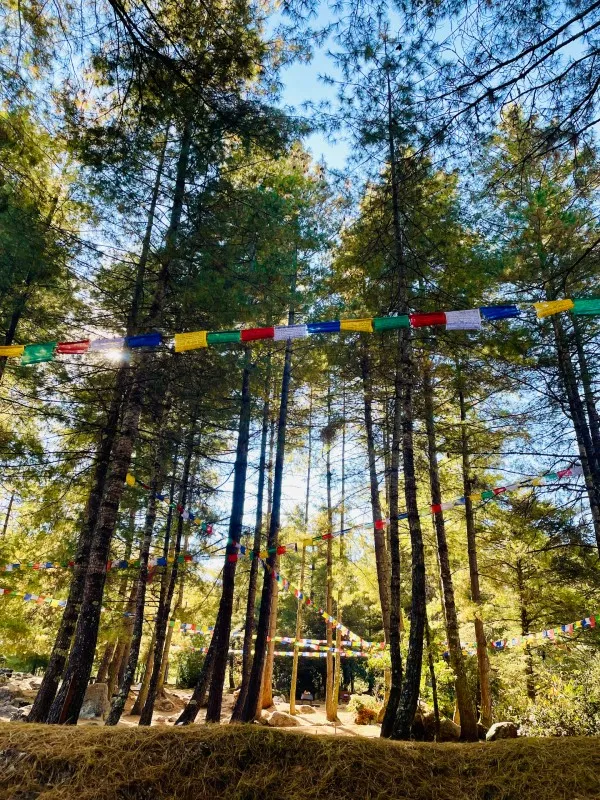
Forest bathing near Amankora Paro turns out to be a grounding sensory experience.
“The heat of the water, medicinal herbs, and minerals released from the stones combine to release tension, relax the body, and cleanse the skin. The Bhutanese have traditionally used such baths to treat ailments such as arthritis, hypertension, and joint pain,” she says.
I step out, relaxed and rejuvenated, and decide on a walk in the forest that surrounds the property before dinner. My evening of “forest bathing” turns out to be a grounding sensory experience. The sight of the colourful, fluttering prayer flags; the sound of a bubbling stream; the feel of the moist grass and tiny pinecones under my feet; and the woody smell of pine needles are a pause from the busyness of routine life.
Here, where I can hear the birds chirp and feel the pine needles fall, there is no rush, no need to get a move on. I can dawdle and dilly-dally, focusing on the now.
The next morning, I head into the town, which is situated on the banks of the Paro Chhu (chhu means river in Bhutanese). The river gently winds its way through the wide valley, creating beautiful vistas and fertile fields.
“The productive Paro valley gives Bhutan the majority of its red rice, our staple food,” Phuntso tells me.
Paro is a charming town, with one main street lined with small shops and local restaurants, all showcasing elements of traditional Bhutanese architecture. The stores showcase a variety of local handcrafted items—intricate textiles, handmade pottery, wood carvings, vibrant paints, traditional jewellery, prayer wheels, and antiques.
The strings of chugo (dried yak cheese) draw my attention. The shopkeeper asks whether he should pack up the white (boiled in milk; dried in the sun) or brown (smoked)? But I’m not sure if I will be able to do justice to the “hardest cheese in the world” and instead evince an interest in the pats of datshi. The tangy, unripened cheese is the bedrock of dishes like ema datshi, the spicy Bhutanese stew that combines hot chili peppers with cheese, kewa datshi (potatoes), shamu datshi (mushrooms), and gondo datshi (eggs).
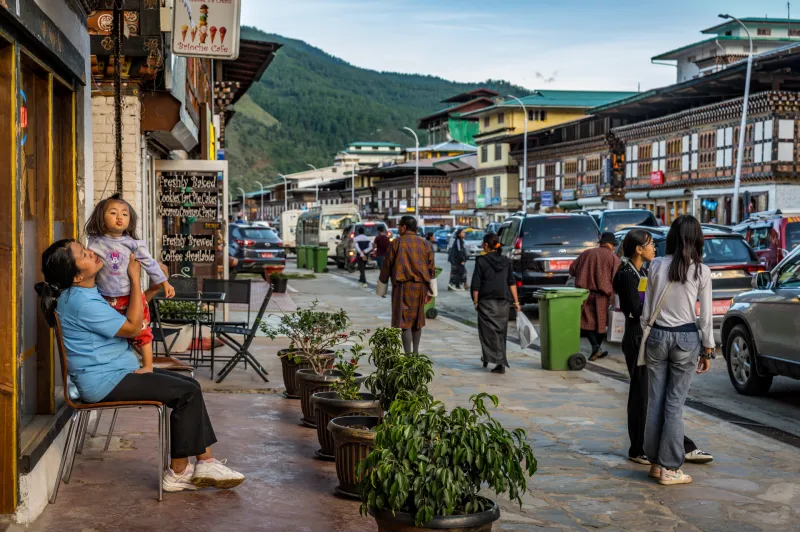
Built in 1985, Paro's main street is a concrete-free blend of traditional restaurants and shops. Courtesy: Bhutan Tourism
The guide tells me about other nearby places of interest, including Kila Gonpa, a nunnery that dates to the 9th century; Drangye Gonpa, a hilltop monastery dedicated to the principal deity of the Five Long-life Sisters; and Dungtse Lhakhang, a 15th century temple known for its intricate murals, but I’m running short on days.
Phuntso tells me that I must return to visit Taktsang, often referred to as Tiger’s Nest, and one of Bhutan’s most iconic landmarks. Guru Padmasambhava, who introduced Buddhism to Bhutan, is said to have reached the site of the isolated cliff-hanging monastery in the 8th century—on the back of a tigress! That gave the monastery, where local lore suggests he meditated “three years, three months, three weeks, three days, and three hours”, its name.
As I haul my luggage down to reception the next morning, I reflect on the little touches that made my stay exceptional: small notes, turndown gifts, a snuggly hot water bottle, and a freshly baked brownie for my drive to the airport. But the best is definitely saved for the last: a monk who performs a traditional sungkey ceremony to bless me with safety and happiness as I journey back home.
Edited by Megha Reddy






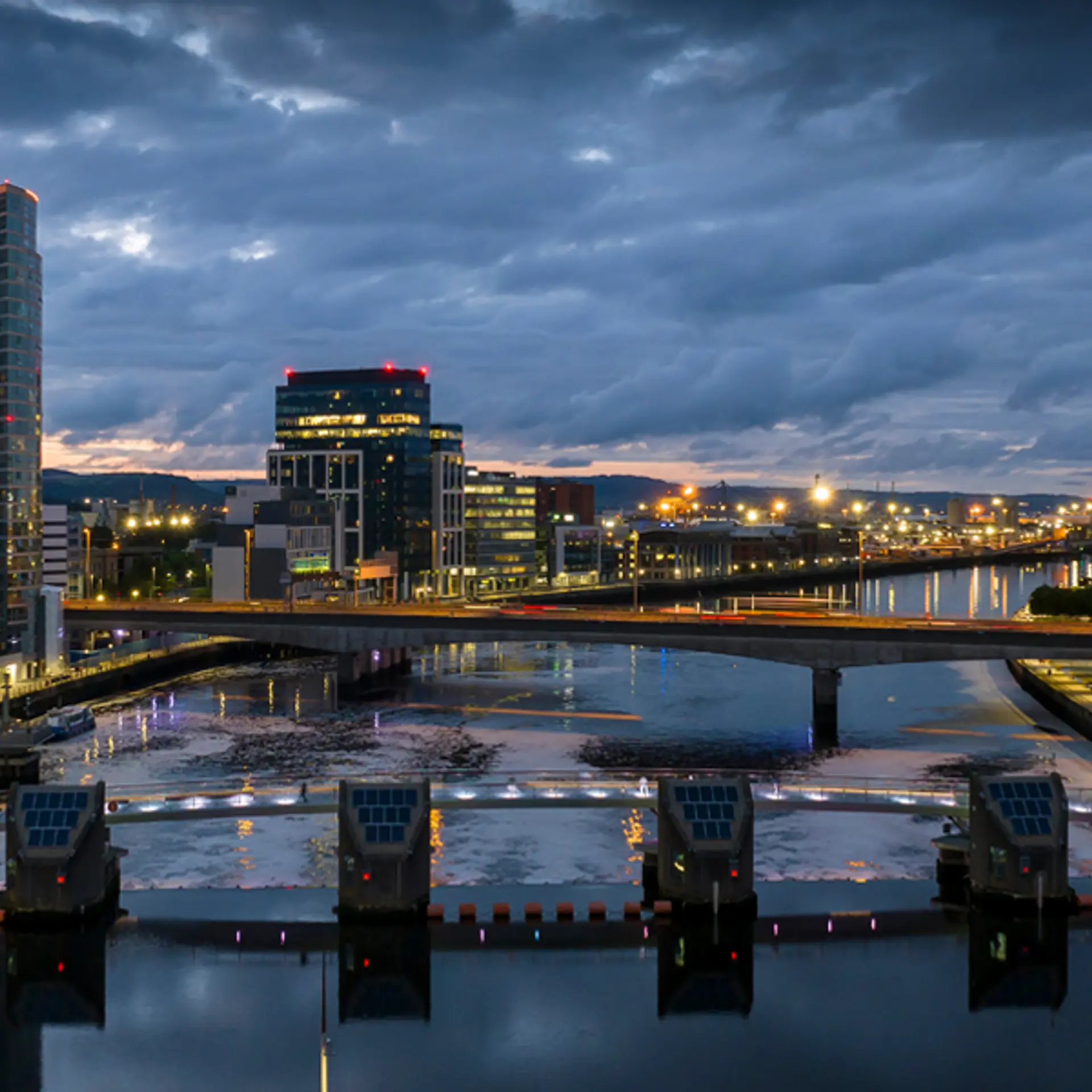
![[App Friday] Finch’s gamification of self-care is a hit and a miss](https://images.yourstory.com/cs/2/f49f80307d7911eaa66f3b309d9a28f5/Finch-1655391957378.png?mode=crop&crop=faces&ar=1%3A1&format=auto&w=1920&q=75)